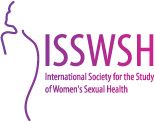PRESS RELEASE
Reference Articles:
Efficacy and Safety of Flibanserin for the Treatment of Hypoactive Sexual Desire Disorder in Women A Systematic Review and Meta-Analysis, Loes Jaspers; Frederik Feys; Wichor M. Bramer; Oscar H. Franco; Peter Leusink; Ellen T. M. Laan; JAMA Intern Med. doi:10.1001/jamainternmed.2015.8565, Published online February 29, 2016.
and the accompanying editorial
US Food and Drug Administration Approval of Flibanserin, Even the Score Does Not Add Up, Steven Woloshin; Lisa M. Schwartz; JAMA Internal Medicine Published online February 29, 2016.
Download PDF
- Press Release
- Bullet Points Reference Article
- Bullet Points Accompanying Editorial
February 29, 2016 - Science has been corrupted by bias and personal agendas resulting in publication of a distorted analysis of outcomes of research trials. As authorities in the area of sexual function and dysfunction in women, in particular hypoactive sexual desire disorder (HSDD), the Board of Directors of the International Society for the Study of Women's Sexual Health (ISSWSH)1 is concerned that the aforementioned articles would be accepted by and published as quality science and factual commentary. According to Levine, the diverse controversies involving treatments for sexual difficulties have resulted in stakeholders interpreting science for us in ways that support their political ideological views, economic interests, or skill sets.2 This is clearly the case with regard to both the Jaspers et al. article and subsequent editorial response. We wish to set the record straight. When articles that reflect opinion rather than science are published in scientific journals, they harm those meant to be aided by science and medicine resulting, in this case, in a great disservice to the millions of pre-menopausal women suffering from HSDD.
In August 2015, the FDA approved flibanserin 100 mg at bedtime for the treatment of generalized, acquired hypoactive sexual desire disorder in premenopausal women.3 That same year, Gao et al. published a systematic meta-analysis of flibanserin, and found flibanserin to be effective and safe in women with HSDD.4 Thus, it is surprising that the editors of JAMA Internal Medicine chose to accept the analysis by Jaspers et al. for publication, and that they did not solicit an editorial with a contrasting opinion, standard practice in scientific journals.
Among the concerns with the analysis by Jaspers et al. are the inclusion of published and unpublished data for analysis, studies without doses found to be effective, studies with dosing schedules associated with increased side effects (given in the morning) and studies that were not completed. Further, the authors neglected to include information from the Female Sexual Distress Score-Revised (FSDS-R Item 13), a scale rating the level of distress associated with the loss of sexual desire, a cardinal symptom in HSDD. However, despite lacking systematic inclusion criteria for the studies, Jaspers et al. found the data favors flibanserin over placebo for every study on the 3 measures included in the article. These are "high quality" efficacy and safety data because they are from adequately powered, randomized, double-blind, placebo-controlled trials, but the authors conclude the evidence is of "very low quality" demonstrating their anti-medication bias. Unfortunately, only the authors' conclusions about the data are included in the abstract, not accurately reflecting the evidence.
The associated editorial by Woloshin and Schwartz contains inaccuracies reflecting a strong anti-medication bias. Its inclusion in JAMA Internal Medicine provides the authors with an opportunity to be self-serving, as they have a business which stands to profit by driving traffic from the editorial to their website. Please see detailed attachment for specifics with regard to both the manuscript and editorial.
ISSWSH is a scientific society focused on education and has not received any funding for the evaluation of this study. Financial disclosures are available upon request. Please contact
1. http://isswsh.org/
2. Levine SB. Flibanserin. BMJ 2015;350:h3097
3. Joffe HV, Chang C, Sewell C, Easley O, Nguyen C, Dunn S, Lehrfeld K, Lee L, Kim MJ, Slagle AF, Beitz J. FDA Approval of Flibanserin - Treating Hypoactive Sexual Desire Disorder, N Engl J Med .2016 Jan 14;374(2):101-4. doi: 10.1056/NEJMp1513686. Epub 2015 Dec 9.
4. Gao Z, Yang D, Yu L, and Cui Y. The efficacy and safety of flibanserin in women with hypoactive sexual desire disorder: A systematic review and meta-analysis. J Sex Med 2015;12:2095-2104.
Media Contacts
David Casalod, Executive Director
Tessa Benitez, Associate Executive Director
Phone +1 (952) 683 9025
E-mail
###
